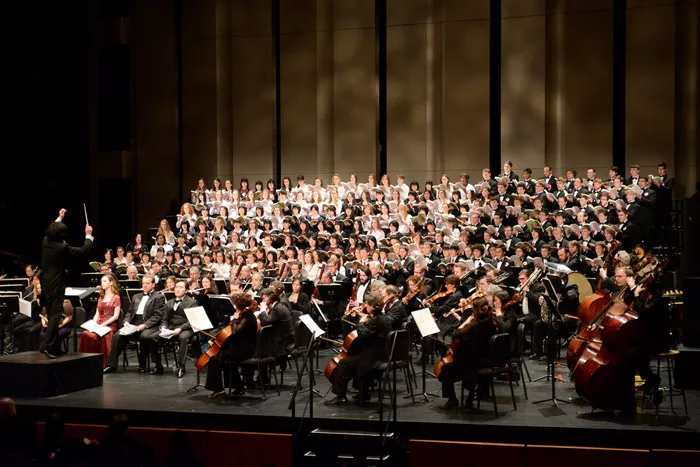Franz Joseph Haydn, often referred to as the “Father of the Symphony,” left an indelible mark on classical music with his innovative and masterful compositions. His symphonies, in particular, showcase his genius in crafting musical works that are both technically sophisticated and emotionally resonant. In this article, we delve into the world of Haydn’s symphonies, exploring some of the best works that highlight his diverse style, creative depth, and lasting influence.
The Legacy of Franz Joseph Haydn
Franz Joseph Haydn, born in 1732 in Rohrau, Austria, emerged as one of the most prominent composers of the Classical era. He spent much of his career in service to the Esterházy family, where he composed prolifically, producing a vast repertoire that includes symphonies, string quartets, operas, and more. Haydn’s contributions to the development of the symphony form are unparalleled, laying the groundwork for composers who followed him, including Mozart and Beethoven.
The 5 Best Symphonies by Haydn
1. Symphony No. 94 in G Major, “Surprise”
One of Haydn’s most famous and beloved symphonies is Symphony No. 94 in G Major, often nicknamed the “Surprise Symphony.” Composed in 1791, this work exemplifies Haydn’s wit and humor, characteristics that endeared him to audiences of his time and continue to captivate listeners today.
The symphony is structured in four movements:
Adagio – Vivace assai
Andante
Menuetto: Allegro molto
Finale: Allegro di molto
The second movement, Andante, is particularly notable for its unexpected loud chord, known as the “surprise,” which interrupts the otherwise gentle and serene melody. This playful element showcases Haydn’s ability to engage listeners and injects a sense of theatricality into the music.
2. Symphony No. 88 in G Major
Another gem in Haydn’s symphonic repertoire is Symphony No. 88 in G Major. Composed in 1787, this symphony demonstrates Haydn’s mastery of form, melody, and orchestration. It is characterized by its lively and spirited nature, with each movement showcasing Haydn’s inventive musical ideas.
The structure of Symphony No. 88 is as follows:
Adagio – Allegro
Largo
Menuetto: Allegretto
Finale: Allegro con spirito
The opening Adagio – Allegro immediately draws listeners in with its dynamic contrasts and thematic development. The Largo movement provides a moment of introspection and beauty, while the Menuetto and Finale movements exude energy and vitality, highlighting Haydn’s versatility as a composer.
3. Symphony No. 104 in D Major, “London”
Haydn’s Symphony No. 104 in D Major, also known as the “London Symphony,” is a crowning achievement in his symphonic output. Composed in 1795 during his second visit to London, this symphony reflects Haydn’s mature style and compositional prowess.
The symphony consists of four movements:
Adagio – Allegro
Andante
Menuetto: Allegro
Finale: Spiritoso
Each movement of Symphony No. 104 is a testament to Haydn’s brilliance. The Adagio – Allegro unfolds with grandeur and drama, while the Andante showcases Haydn’s lyrical sensibility. The Menuetto and Finale movements are vibrant and engaging, leaving a lasting impression on listeners.
4. Symphony No. 45 in F-sharp Minor, “Farewell”
Symphony No. 45 in F-sharp Minor, often called the “Farewell Symphony,” is a unique and evocative work that illustrates Haydn’s creativity and storytelling abilities. Composed in 1772, this symphony has a compelling narrative woven into its structure.
The symphony is structured in four movements:
Allegro assai
Adagio
Menuetto: Allegretto
Presto – Adagio
What sets Symphony No. 45 apart is its unconventional ending. In the final movement, the musicians gradually leave the stage, symbolizing a “farewell” to their patron, Prince Nikolaus Esterházy, who had kept them in residence for an extended period. This clever and dramatic gesture adds depth to the symphony and showcases Haydn’s ability to infuse music with narrative and emotion.
5. Symphony No. 100 in G Major, “Military”
Closing our exploration of Haydn’s best symphonies is Symphony No. 100 in G Major, known as the “Military Symphony.” Composed in 1794, this symphony is characterized by its bold and martial elements, earning it the nickname “Military” due to its use of percussion and brass instruments in a military-style march.
The symphony comprises four movements:
Adagio – Allegro
Allegretto
Menuetto: Moderato
Finale: Presto
The “Military” Symphony opens with a dramatic Adagio – Allegro, setting the stage for the energetic Allegretto and the graceful Menuetto. The Finale, marked Presto, showcases Haydn’s skill in creating rhythmic drive and excitement, making it a memorable and thrilling conclusion to the symphony.
Conclusion
Franz Joseph Haydn’s symphonies stand as timeless treasures in the classical music repertoire. From the charming surprises of the “Surprise Symphony” to the grandeur of the “London Symphony” and the narrative richness of the “Farewell Symphony,” Haydn’s works continue to captivate audiences and inspire musicians worldwide. His mastery of form, melody, and orchestration, coupled with his innovative spirit and emotional depth, ensure that his symphonies remain among the finest achievements in classical music history.

